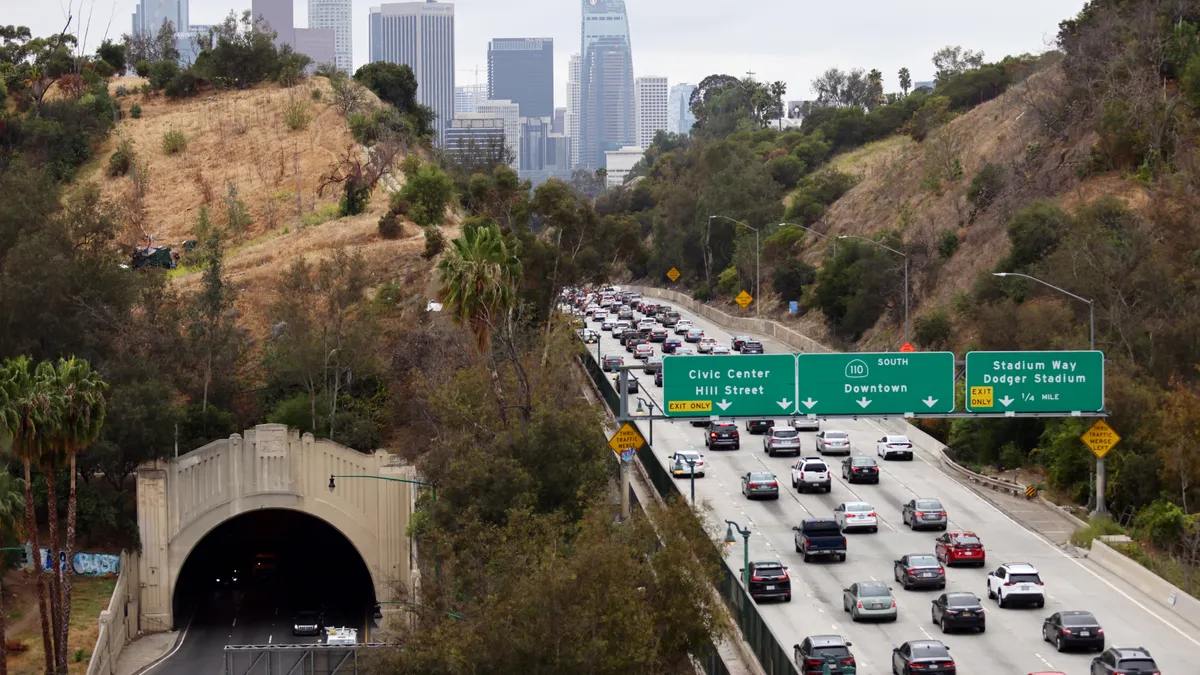Dive Brief:
- The U.S. Department of Transportation released a 44-page report to Congress July 12 on decarbonizing transportation.
- The DOT outlined three decarbonization strategies: reducing the distance traveled for people and freight; increasing options for more energy-efficient travel modes and transitioning transportation to zero-emission vehicles and fuels.
- The report outlines the department’s strategy and actions for reducing greenhouse gas emissions in the U.S. in accordance with the nation’s international commitments. It draws from the Biden administration’s blueprint to decarbonize transportation, promulgated in January 2023.
Dive Insight:
Transportation accounts for 33% of greenhouse gas emissions in the U.S., with light-duty vehicles, trucks and buses accounting for 70% of all U.S. transportation emissions, according to DOT. However, different transportation modes have different “emissions intensities” as measured by greenhouse gas emissions per mile traveled, the report says.
Greenhouse gas emissions are the main cause of climate change. Under the United Nations Paris Agreement, the U.S. committed to reducing these emissions below 2005 levels by at least 50% by 2030 and achieving net-zero emissions by 2050. However, the DOT report says, “Given that transportation is the largest source of U.S. GHG emissions, it is impossible to meet the net-zero goal without driving transportation emissions down to near zero.”
Specific actions the DOT highlighted include:
- Land-use planning to enhance convenient access to jobs, shopping, schools, entertainment and other services through transit-oriented development; supporting walking, biking and micromobility options and establishing transportation demand protocols such as carpooling and employer-sponsored transit passes.
- Investments in public transit and passenger rail to create a more energy-efficient transportation system;raising fuel economy standards for passenger cars, light trucks, vans and heavy-duty trucks; developing lower-emission aviation fuels and shifting freight shipping from trucks to more energy-efficient rail and maritime modes.
- Establishing a national network of electric vehicle charging stations. The report points to the $5 billion National Electric Vehicle Infrastructure program to build charging stations along the federal highway system and the $2.5 billion Charging and Fueling Infrastructure program to establish EV and alternative fueling facilities along designated corridors and within urban and rural communities.
“DOT is committed to using its current authorities and funding to reduce GHG emissions,” the report says.
However, the Biden administration’s 2023 rule requiring state departments of transportation and metropolitan planning organizations to set declining CO2 emissions reduction targets for transportation-related emissions on interstate highways and other major roads was met with immediate opposition. In March, a Texas court struck down the rule, finding that the DOT did not have congressional authority to issue it. Congressional Republicans have also opposed the rule.
The report’s release coincided with a two-day live and online transportation and climate symposium in Washington, D.C. that concluded Friday.












